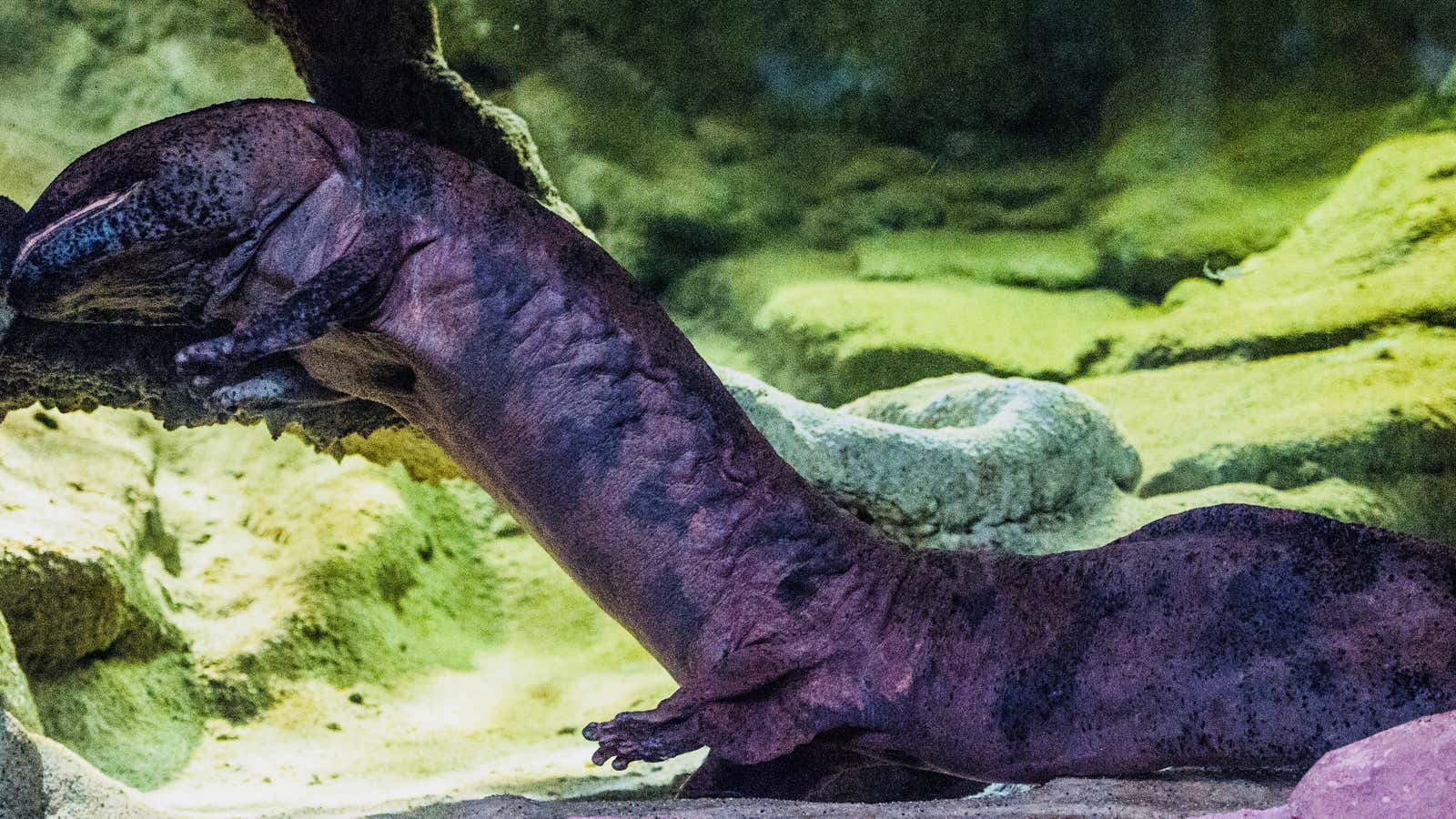The road to hell—and species extinction—is paved with good intentions. Efforts to conserve the world’s largest amphibian, the Chinese giant salamander, are turning out to be misguided, according to zoologists.
A May 21 study in the journal Cell reveals that this “living fossil,” thought to have remained largely unchanged for 170 million years, is being unwittingly transformed. The original wild giants are now nearly impossible to find, while genetic hybrids abound.
An international research team, including zoologists from the Chinese Academy of Sciences, spent 10 years conducting genetic analyses of over 70 wild-caught giant salamanders and over 1,000 farm-bred creatures. They conclude that “bad taxonomy” and commercial farming have led to the hybridization of giant salamander species, which is driving a “hidden extinction” of these impressive creatures—the largest extant amphibians, which grow to nearly four feet in length. In other words, while the giant salamanders seem to be proliferating, the original species are actually disappearing.
The issue can be traced back to the rising popularity of giant salamanders as a culinary delicacy in China. This led to a boom in the commercial farming of giant salamanders, which was encouraged by the government for economic purposes. Commercial farms don’t make distinctions between the giant salamander types, so genetic mixing there happens willy-nilly.
Then the farms release some of the farmed salamanders back into the wild without regard for the environmental habitats of different species, a conservation effort supported by China’s Ministry of Agriculture. Since 2008, at least 72,000 Chinese giant salamanders have been released from farms, according to the study. That’s led to the creation of new breeds that are different from the original ancient amphibians.
“Chinese giant salamander conservation treats all populations as a single panmictic species,” the study notes. “Of greatest concern, Chinese giant salamander farms are the source of animals for reintroduction programs, and this commercial activity has led to extensive trade and movement of animals between farms across the range of the Chinese giant salamander in China.”
For example, individual salamanders recently caught from tributaries of the Pearl and Yangtze rivers have the genetic marks of a different species from the Yellow River, but lack indigenous indicators. Essentially, the creatures have been changing. They no longer resemble the type of Chinese giant salamanders that originated in particular locations.
“By releasing huge numbers of farmed Chinese giant salamander, this genetically uninformed strategy may eradicate the evolutionary uniqueness of native … populations and drive extinction by genetic homogenization,” the study warns.
The researchers warn that the failure to recognize the existence of distinct species, coupled with the proliferation of new giant salamander types through breeding and haphazard release efforts, could lead to the total disappearance of the oldest living amphibians. They say that amphibian conservation strategies generally need “urgent updating,” based on their findings. “We recommend that population genetics be performed for all threatened taxa, in particular those in current or future conservation breeding programs,” they write.
